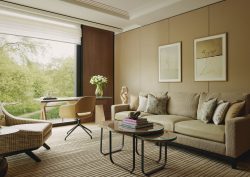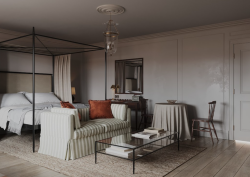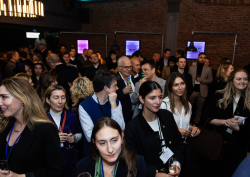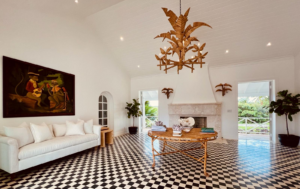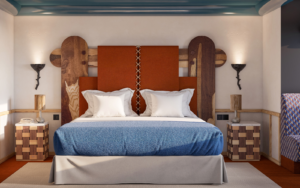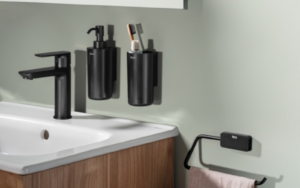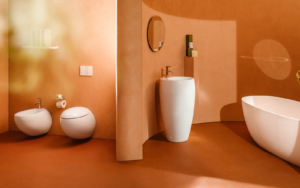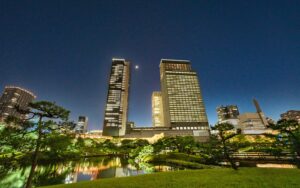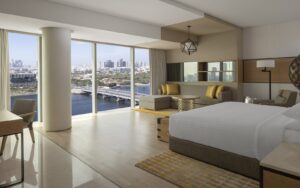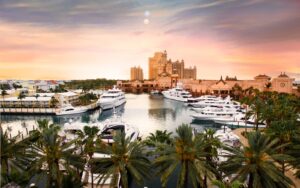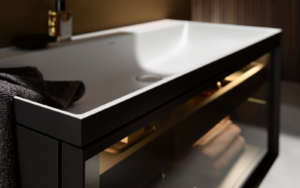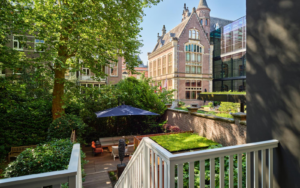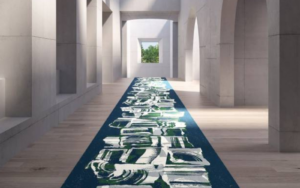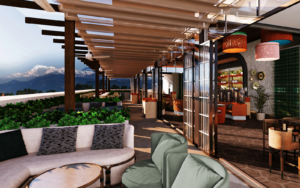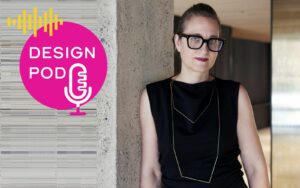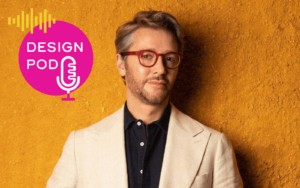As Senior Associate of Spa Development at ESPA International, Melanie Kershaw knows exactly what is required to provide both hotel operators and guests a multifaceted spa experience. On a recent trip to the ESPA flagship spa at the Waldorf Astoria Lusail Doha, writer Pauline Brettell sat down with her to find out more about the design machinations behind the massages and the mindfulness…

It is clear that the hotel spa is no longer confined to the dead space of the hotel – it has come out of the basement and into the sunlight as our concern for health and wellbeing continues to grow exponentially. From pillow menus to personalised scents in the guestroom, hotels are integrating aspects of wellness into multiple levels and shouting about it from the biophilic roof terraces– the design of the spa has to both keep up and in many cases, lead the way.

Image credit: ESPA
Pauline Brettell: As the spa increasingly becomes a key differentiator in hotel brands, do you find hotels are becoming more open to new wellness ideas?
Melanie Kershaw: Awareness of the spa in the industry is ever increasing, as owners, hotel operators and guests alike all want authenticity and a spa that delivers is key. At ESPA Design and Consultancy, everything we design is for a reason and this resonates with owners and hoteliers as we collaborate to deliver an ESPA spa or ESPA Life Restorative Wellness. That being said, space is always a challenge, however if designed well, with a genuine spa concept to support guests on their wellbeing journey, there is usually a willingness during early discussions to find that balance of allocating the right amount of space to the spa.
As we see different types of wellbeing modality being embraced, we are able to look beyond the walls of the spa and extend the offerings into other areas on property, such as the pier overlooking the sea for yoga classes and sound bath sessions, as in the case of ESPA Life Waldorf Astoria Lusail, or depending on location, forest bathing and cold-water swimming.
PB: How has spa design changed – and is still changing?
MK: We have seen a shift from the spa being primarily treatment rooms and relaxation spaces designed with pools, to more social spaces as the need for connection is greater now, more than ever. There is definitely a greater focus on wellbeing spas and integrative wellness resorts. This shift is about designing wellbeing spaces with a holistic approach and offering a wellness and spa experience that is designed to allow guests to pause, connect and reset the body’s systems, all within a luxury environment that supports the individual needs.
So offering treatment experiences that support both physical and mindful harmony is now really important. As people’s priorities change to gain more balance and perspective, regularly taking care of our minds as well as our bodies with cognitive training and mindful therapies, physical experiences and improving our gut health and microbiome is key to future proofing long term health.
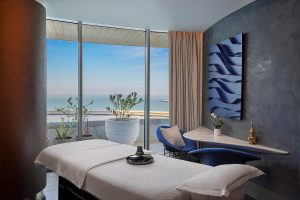
Image credit: ESPA
PB: How does the relationship between Interior Designer and Spa Designer playout?
MK: Collaboration is key! We are very fortunate to work as a team with some of the most talented interior designers internationally. ESPA Design and Consultancy can work on a project together with the interior designers from master planning, concept development, spa planning, technical to construction, pre-opening, training and operational set up – so for us it’s a long-term relationship and the benefit of that is that we keep in touch and happily work on future projects together.
PB: Can interior design re-direct the spa design, or is it usually the other way around?
MK: Yes, in some instances where the interior designer might, for example, have a signature style, or design their own furniture and have their own USP, it can direct the look and feel of the spa. However, our job as the Spa Designer is to make sure on all levels – from a sense of place, guest journey perspective and operationally – that the design fits with the concept, the layout works and includes all the right facilities for that specific project, whether that is a city spa, resort or wellness destination.
PB: ESPA use the term ‘Restorative Wellness’ – how does that differentiate from other more traditional spa experiences?
MK: Our approach is approach is driven by the desire to help our guests realise a sustainable state of balance within their body and mind and to help them establish this as their default setting. We believe in prevention as the most effective system of care for our health, primarily through preventing unnecessary inflammation and using skills to manage our stress reaction and so we have skilfully curated nutrition, exercise, movement, treatments and mindful practices to nurture vital life skills and connect guests with knowledge and inspiration to reset both their physical and mindful wellbeing.
There is a focus on more lived sensorial experiences, short interludes which guests can take away and use in everyday life to bring an immediate moment of calm, energy or focus. Guests love this autonomy – taking a skill away from each Restorative Wellness experience that they can use practically and see both immediate and accumulative effects really resonates with our guests especially after recent world events – having a toolbox of skills to use as and when needed, is a valuable asset.
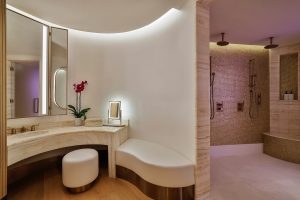
Image credit: ESPA
PB: Aside from products and treatments – can the spatial design contribute to the concept of restorative wellness?
MK: Yes definitely, the design can encourage guests along their journey, contributing to a greater sense of wellbeing, starting by inviting guests into comfortable surroundings that are light, airy welcoming spaces, spaces where guests are immediately supported by the design. The spa journey then transitions to more tranquil and cosy spaces defined for treatments, where it feels safe to experience treatments in a positively reinforced environment – a safe, welcoming, nurturing, non-judgemental space where we can help spark joy and cultivate happiness within our guests, where positive personal life lessons are inspired, infused and nurtured.
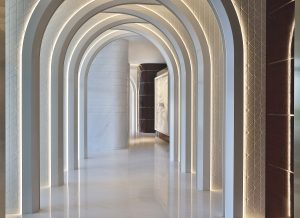
Image credit: Espa
PB: Moving onto ESPA Life Waldorf Astoria Lusail specifically, the hotel has a large amount of space dedicated to the spa and wellness facilities – was this a given right from the initial discussion, or did it grow with the design?
MK: Initially only one floor was allocated and it soon became evident as we worked on the design with the client and designers at WATG London, this was not going to support all the facilities needed for it to be the ESPA Life flagship in the Middle East. Designing spaces that reflect all aspects of the concept to deliver Restorative Wellness was key. Generously located over three floors and spanning 3,000 square meters, the facilities were extended to ensure we were able to offer total wellbeing, a sanctuary for both physical and mental regeneration and relaxation. Extensive thermal experiences and signature treatment rooms were coordinated with wellness suites, traditionally inspired hammams, state-of-the-art fitness centre, mindful studio for lifestyle classes and suites for beauty and grooming services – all with the aim of establishing this distinctive lifestyle concept.
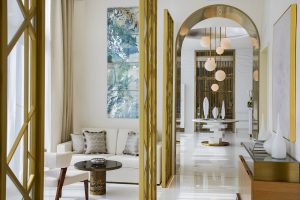
Image credit: ESPA
PB: Can you explain the concepts behind the ESPA Life Waldorf Astoria Lusail spa experience both visually and experientially?
The guest journey was important, and the way ESPA Life is first discovered by entering through a curved portal, embarking upon a journey through a series of arches, created a sense of rhythm, visually guiding guests from one space to another. Working alongside the interior design team at Pierre-Yves Rochon, (PYR) we were delighted with their concept inspiration of an Arabic fable ‘that pearls are created from dew drops during the nights of a full moon’. This set the tone for the look and feel and the desire to represent and portray the illusions of pearls consistently throughout space.
The journey unfolds from Spa Reception, a beautiful lounge with a stunning light feature; a cluster of moon shaped globes suspended from the ceiling, a gentle nod to the design inspiration. Transitioning through Wyld Erth Café a sense of calmness is instilled, encouraging optimum wellbeing for body and mind which lies at the heart of what we do. This philosophy is rooted in preventative healthcare principles and flows throughout the spa offering.

Image credit: ESPA
Moving on through the spa. energy rises as we enter the state-of-the-art Fitness Centre and Mindful Studio. We had the exciting opportunity to create something special with the gym and embraced the chance to extend the space outdoors to a six-metre-wide terrace holding the best views over the sea. The gym wholly maximises its location with full height glazing curving all the way round, creating an indoor-outdoor environment with the benefit of visually connecting with nature, encouraging the release of natural feel-good endorphins.
PB: How is the spa experience enhanced by the design?
MK: It was important to maximise the location of spa, having the best view of the bay and include a dramatic sense of scale with floor to ceiling windows. Indoor and outdoor zones were connected by the terrace that flows around the entire spa allowing natural light in to illuminate areas and welcome guests, whilst the journey through internal spaces was designed to soothe the senses. The design stylishly captures a contemporary elegance. Polished surfaces contrast with tactile textures, organic shapes and warm natural colours feel nourishing with aesthetic appeal and complementing the sensorial journey. A subtle rhythm is created between interlinked spaces. Light, shadow and pattern are used to define guest areas that are welcoming, luxurious, modern and social.
Taking advantage of the views and outside spaces was important to connect with nature, embracing natural daylight, whether in arrival spaces, the gym or within the wellness suites. There was also a need for a blend of social and private spaces, with areas to meet with friends in comfortable surroundings and for spaces to be by yourself, and the sumptuous choice in the design by PYR supports this.
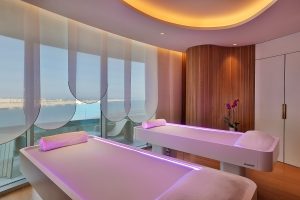
Image credit: ESPA
The entire process was collaborative to ensure that the design works on every level. Working with the architect WATG London we considered the shape of building, the best views, a solar study and designed the layout of the spa accordingly. Moving inside with the PYR team, we considered the flow of the spaces, the materials and finishes and colour palette to tell the story and echo the project concept, ensuring that the design and wellness experience are intertwined.
Continuing the collaborative story, working with Nulty Lighting was key, as the lighting also plays an integral role throughout the design with indirect linear lighting provided diffused light, accents above vanities and different colour temperatures within the pools to compliment the feeling of the water and experience of the hot and cold pools. A fibre optic ceiling lighting is a stunning feature in the male thermal suite and water reflections dance above the hot vitality pool, deep hues of blue and grey georgette silk marble cocoon thermal experience and lighting grazes the spiral mosaic giving a subtle shimmer to this backdrop.
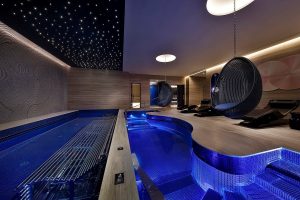
Image credit: ESPA
And in brief before we finish
PB: Your most challenging project?
MK: Two projects spring to mind – one was a heritage building where the timeline was impacted hugely by the discovery of a number of significant Roman archaeological finds, uncovered during excavation to support the original foundations – the other extreme was on a project in Thailand where during construction we had several visits from a water monitor lizard who enjoyed a dip in the vitality pool!
PB: The one essential product on all your spa-design travels?
MK: The ESPA Tri-Active Regenerating Treatment Oil, is one of my favourites, I love it! It’s great to use in flight after spritzing with Hydrating Floral Spa-Fresh Mist, that combination help my skin feel hydrated in flight – and of course drinking plenty of water.
PB: Personal favourite wellness activity?
MK: I love being outside and connecting to nature so walking my dog is right up there on my list for raising vibrational energy. I also find Qi Gong and breathwork really helps me to find a moment of calm and centre myself, especially when I’ve been travelling.
And finally…
PB: Any exciting projects in the pipeline you can share with us?
MK: Yes! We are working on several exciting projects internationally; in Japan, with Spas featuring Onsen and beautiful sense of place, in Singapore, in Mexico we have a project situated along a stretch of the Caribbean coastline with cenote design elements in a beautiful location known for its ecological reserves. We also have projects throughout Europe including Spain and Italy which are both situated in historic and iconic buildings so it’s a very exciting time.
Main image credit: ESPA

